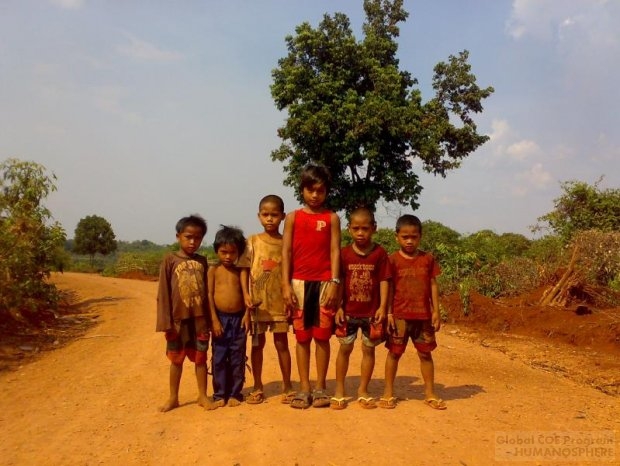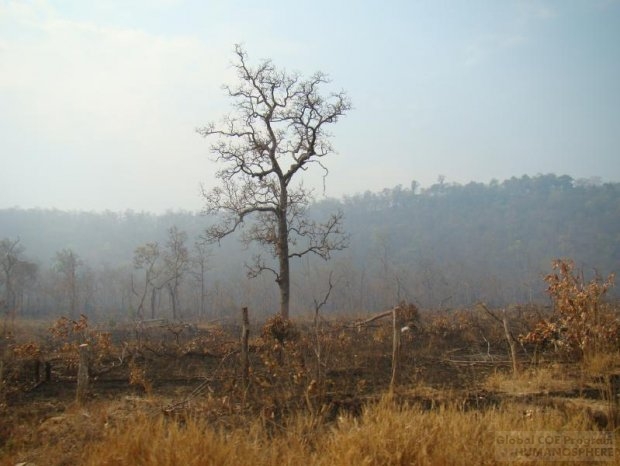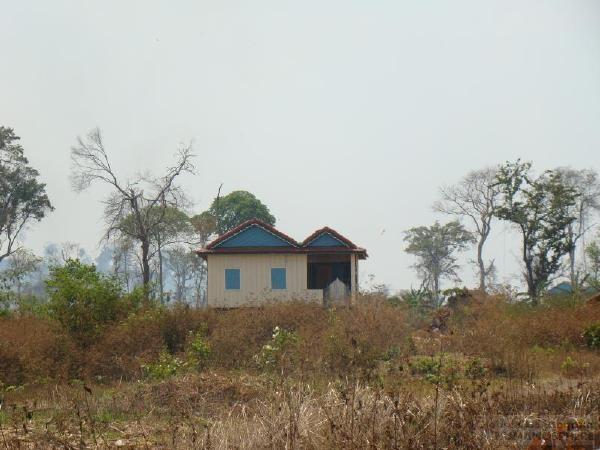Development Discourse
| Development Discourse in Northeastern Area of Cambodia |
| Development Discourse |
| Reference |
Development Discourse in Northeastern Area of Cambodia
Royal University of Phnom Penh
History Department
Thol Dina
E-mail: tholdina_history[a]yahoo.com
Developing countries always seek to develop their countries through a variety of programs. Cambodia, one of the developing countries, has experienced a numbers of developing projects. In general perspective, development is good because it brings progression, prosperity, and the modernity to the target of the development programs. However, from the scrutiny perspective, development does not always mean good. Some development projects affected the livelihood, traditional practice, natural resources, and more conflicts. That is why there is discourse discussion on development. This section will discuss some concepts of development discourse in term of technology of power.
Development Discourse
From the development and state agencies, they always mention that development is good people because development will help people to understanding their potential and use it to improve their living standard. However, from the development project, powerless and poor people are always the target and the victims from the impacts of it (Kaufman, G 1997: 118). In Cambodia, most ethnic highlanders became the victims of the development works. With the grant of land and forest concession, highland people lost their land and forest because the granted company areas usually overlapped with their territories. In addition, some companies committed illegal logging which destroyed the forest rapidly and affected on the livelihood of highland people because most of them rely on the forest product gather besides their rice shifting cultivation.
Development has been introduced in northeastern area of Cambodia long time ago. At that time, the state power (French) viewed development program as civilization mission to pull people from poverty, poor health condition, and improve the condition. In fact, this kind of development programs brought little benefit to poor people. In contrast, it is seen as the way the state used it to strengthen their power and get benefits for them (Komatra, C 1998: 337). During French period, they built military post and rubber plantation around Memot and Snoul. French purpose at that time was to collect tax from people in the northeastern area. However, French could no collect much tax from the highlander people because they lived in the forest in which they can escape from French more easily. Even French caused burden to highland people, but they helped stop the slavery in the area.
The popular ideas of development related to the process of transforming poverty into prosperity and the integration of ethnic minorities into mainstream society (Quoted by Pen Dareth 1996). This policy is widely practiced by many states in Southeast Asia countries with their own highland people. In Cambodia, during Sangkum period, the government initiated new policy to integrate highland people into Khmer society. To make this policy work, the government at that time built school, health care centers, prepared journey for highland people to see low land area, and establish Phum Kumrou. With this initiation, the government hoped to help highland people to increase their livelihood and increase their rice products. The policy failed to help highland people because the government did not provide enough technical tools for highland people who never practiced the low land rice technique.
The education system worked very little because the lesson was not suitable for the students and the big barrier was that low land teachers did not understand well about the culture of highland people. Most importantly, the low land people still felt scared to live with the highland people who they used to have not good perception on them. For the other reason, the policy of the government at that time was to control highland people and strengthen their administrative in this area to protect the spread of communist movement (Meyer, C 1979 quoted by Ironside 1997).
After colonial period, development is seen as the model of progress in which it aims to promote people living standard. Development appears as the economy improvement which is mostly based on the concept of Westerners without paying much attention to local perceptions in the areas implemented. According to Shiva (Shiva, V 1989) this type of development tends to exploit local people resources and violate the landscape and affect their culture. Drawing from the examples from ethnic highland people in Ratanakiri, with the open of market economy after 1993, highlander people have faced challenges from the impacts of development. Their forest resources have been destroyed rapidly by the illegal logging. Further, with the increase of land price, their land is grabbed or cheated. These factors affect their culture and their livelihood because they lost forest sources and do not have enough land to cultivate upland rice.
Development is also implemented in order to bring modernization to people. It aims to pull people from poor living and experience the modern tools and technology. However, previous experiences indicate that modernization undermined the traditional society and traditional structures, identity, culture and livelihood of the people (Colm and Rigg 1997). With modern technology, some ethnic highlanders in Ratanakiri gradually abandon some of their traditional practices. Highlander people used to have traditional Kong when they celebrate their ceremonies. Nowadays, many villages do not use Kong to entertain in the ceremonies. They prefer to use modern musical tools in their ceremonies. Modernization also brings new culture to highland people. Traditionally, young highland people respected the elderly advices, but now they ignore the advices and do not pay attention to the teaching of elderly people.
The highland people are being marginalized and suffered from the impacts of development plans (Komatra, C 1998). They are excluded from making any important decision making for their future development. The government or development agencies do not listen to local people perceptions, but instead they design it for local people as if they have deep understanding of local people. Furthermore, development also reduces the social capital in the community. It means that when development exists, people care more about their own benefits and they will protect their interests through different activities which sometimes affect the people in the same community. Drawing on the examples from Ratanakiri province, some highland people have conflict with the same highland group because of the interest. Some highland people sold other village land to the business people or low land people by claiming that it is their ancestor land. This activity causes conflict among the same highland group and reduces the trust and social capital in their communities.
Development also focuses on the participation approach. Development and government agencies turn their approaches from model of progress, economic improvement, and modernization to participation. They stress on the participation of local community in the process of development in order to get more success. Again, according to Peter Hammer (Peter, H 2008), participation is not different from the previous approaches. It still serves the interests of development and state agencies. Participation is just a kind of new layer bases on the previous layers. It means that participation approach is designed to be new color, but in reality it is the same as the previous techniques. In participation approach local people are like the fish that swim in a pond of water and do not know clear about the water they are living in.
We can apply this kind of research not only in the northeastern areas of Cambodia, we the research can be done in the whole country. Development discourse can be studied in the forest areas, low land areas where there are many cases of land lost, Tonle Sap area, and especially in the city where there are cases of forced eviction.
Reference
Colm, S. (1996). The Highland Minorities and the Khmer Rouge in Northeast Cambodia 1968-1979. Documentation Center of Cambodia, Phnom Penh, Cambodia.
Colm, S. (1997). Land Rights: The Challenges for Ratanakiri’s Indigenous Communities. Watershed People’s Forum on Ecology Vol. 3. No. 1, July-October.
Colm, S. (1999). Land Rights: The Challenges for Ratanakiri’s Indigenous Communities. Watershed People’s Forum on Ecology Vol. 3. No. 1, 29-37.
Colm, S. (2000). Draft Regulations for Use, Land Management and Natural Resources. Ratanakiri, Cambodia.
Ironside, J. et al. (2003) Wilderness and Cultural Landscape: Settlement, Agriculture, and Land and Resource Tenure in and Adjacent to Virachey National Park Northeast Cambodia. Ministry of Environment Banlung, Ratanakiri, Cambodia.
Kaufman G. (1997). Watching the Developers: A Partial Ethnography. Oxforf and New York: Berge Publisher.
Komatra C. (1998). Living on the Edge: Marginality and Contestation in the Kui Communities of Northern Thailand. Ph.D Dissertation in Social Anthropology. Harvard University. UMI, A Bell & Howell Information Company.
Pen, Dareth. (1996). Cambodia and Its Ethnic Minorities Policy: Paper Presented at the International Conference on Asian Minority Culture in Transition Diversity, Identities, and Encounters, 12-15 December 1996, Munster: Germany.
Shiva, V. (1989). Stay alive: Women, ecology and development. London: Zed Books.


